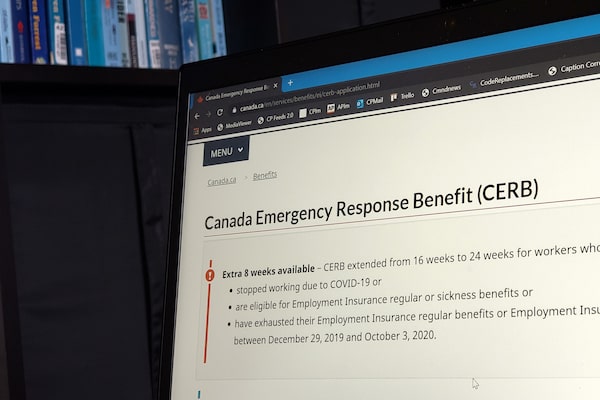
Giordano Ciampini/The Canadian Press
The federal government announced a temporary shakeup to the employment insurance program that will allow more people to qualify for coverage as it looks to transition workers off emergency income-support measures.
As a result of the changes, claimants will need no more than 420 hours of insurable hours of employment to qualify for employment insurance benefits after losing a job and will receive at least 26 weeks of coverage. Under the previous system, at least 420 to 700 hours of insurable hours were required, depending on the claimant’s local unemployment rate, to get at least 14 weeks of coverage.
“This is the first in a series of steps, to be announced in the coming weeks, that will help eligible Canadians transition from emergency income measures back into the EI system and into the labour force as we work together to best position our country for a strong economic recovery,” Employment and Social Development Canada said in a news release.
As the pandemic hit in March, Ottawa sidelined EI in favour of the Canada Emergency Response Benefit, which has paid $64.26-billion to about 8.5 million unique applicants. The federal government is now winding down CERB and looking to transition people onto other forms of assistance. The final CERB eligibility period ends in late September and some recipients have already received their final payments.
With the end of CERB looming, what's next for the unemployed?
But the labour market is far from fully recovered, and millions of people still need some amount of financial help. About 55 per cent of jobs lost during the pandemic have been recouped thus far, and the unemployment rate stands at 10.9 per cent.
In recent days, the federal government said it would include more people in the EI program, while creating a “parallel benefit” for those who don’t qualify for EI, such as gig workers.
The key change in Monday’s announcement is that a claimant’s regular EI benefits will be calculated based on an unemployment rate of 13.1 per cent, even if the jobless rate in a claimant’s area is lower. If the local jobless rate is higher than 13.1 per cent, the higher number will be used.
When a claim is filed, the unemployment rate in the claimant’s economic region and their number of insurable hours of employment are used to determine weeks of EI coverage. Before the pandemic, claimants in a tight labour market with only a 6-per-cent jobless rate needed at least 700 hours of insurable hours to receive between 14 and 45 weeks of coverage.
However, by setting a minimum jobless rate of 13.1 per cent, 420 hours of insurable employment are required nationwide to qualify for EI and coverage will start at 26 weeks.
As people transition onto EI, it’s likely that many will be earning less than on CERB. For most people, regular benefits are equivalent to 55 per cent of average insurable weekly earnings, to a maximum of $573 a week. One can, however, work while on EI and keep 50 cents of benefits for every dollar earned, up to 90 per cent of previous weekly earnings.
The government did not say how many additional people will now qualify for EI. One group that’s excluded is the self-employed, who are ineligible for regular EI benefits and numbered nearly three million people before the pandemic hit.
Your time is valuable. Have the Top Business Headlines newsletter conveniently delivered to your inbox in the morning or evening. Sign up today.
 Matt Lundy
Matt Lundy